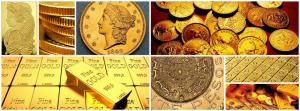Austrian Mint

 Producer of the Gold Philharmonics - one of the world's best-selling gold coins
Producer of the Gold Philharmonics - one of the world's best-selling gold coins
The Austrian Mint is located in Vienna, the capital of Austria. It is registered as Münze Österreich AG, a public limited company that is a subsidiary of the National Bank of Austria. It produces Austria's circulation coins as well as circulation coins for other countries, commemorative/numismatic coins, precious metal bullion coins, medals and coin blanks for other mints and financial institutions. Contemporary Austrian coins don't contain mint marks. The Austrian Mint is renowned for producing the Austrian Gold Philharmonic coin, which has remained one of the world's most popular gold bullion coins ever since its introduction in 1989. It is sometimes also referred to as the Vienna Gold Philharmonic coin because its design is a tribute to the Vienna Philharmonic Orchestra. Another coin that the Austrian Mint is famous for is the Maria Theresa Thaler that was first minted in 1780.
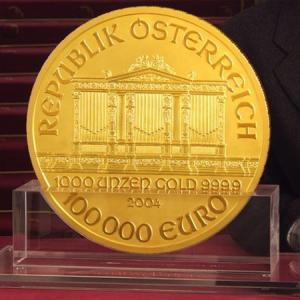
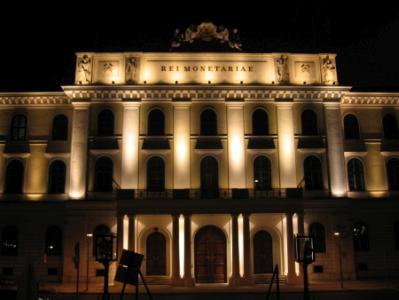
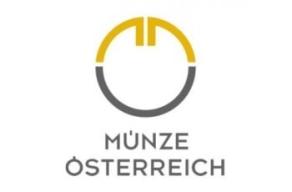
Minting Facilities
The Austrian Mint is located in Vienna, Am Heumarkt 1. The nearest subway station is the "Stadtpark" station of the subway line 4.
Unlike other mints (such as the Royal Mint in the UK), the Austrian Mint doesn't offer guided tours of its facilities. However, it runs two official mint shops. The first one in Vienna is located Am Heumarkt 1, right inside the historic main building of the Austrian Mint. It is open for business from Monday to Friday from 9 am to 4 pm (Wednesday until 6 pm). The second official Austrian Mint Shop is located in the city of Innsbruck at the Adamgasse 2. It is open from Monday to Friday from 8 am to 1 pm and 1.30 pm to 3 pm (Thursday from 2 pm to 4.30 pm).
History
The history of minting in Vienna started in 1194. That was when Duke Leopold VI of Austria decided to strike coins out of the 12 tonnes of silver that he had received as ransom for the release of his prisoner, Richard the Lionheart. However, the Vienna Mint was first mentioned in historical documents in 1397. Its original location was near the Hoher Markt. Later, it relocated to the Wollzeile and then in 1752 to Prince Eugene’s winter palace in the Himmelpfortgasse. Since 1834, the mint is located at its present location am Heumarkt in central Vienna. However, the mint in Vienna was not the only place in Austria where coins were minted. Minting institutions also once existed in the cities of Graz, Krems, Salzburg, Innsbruck and Villach.
The Maria Theresa Thaler, perhaps the most famous (and most minted) historic silver coin in the world, was first minted in the year 1780, the year Empress Maria Theresa died. It is still one of the most renowned coins of the Austrian Mint.
The Republic of Austria was founded in 1918 and the mint in Vienna ("Wiener Hauptmünzamt") was the country's sole mint. It changed its name to Austrian Mint ("Münze Österreich") in 1989. That's when it was registered as a public limited company (Münze Österreich AG) that is a subsidiary of the National Bank of Austria.
Out of the multitude of precious metal coins (in gold, silver and copper) that the Austrian Mint produces, it is the Austrian Gold Philharmonic coin that stands out as its flagship product. That coin out of 99.99% gold was the world's best-selling gold coin in 1992, 1995 and 1996 and has remained a firm favorite with investors.
The Austrian Mint's Gold Bullion Coins
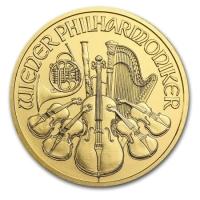
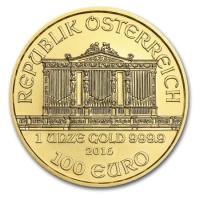
Austrian Gold Philharmonics
The Austrian Mint started with the production of the Austrian Gold Philharmonic coins in 1989. The Gold Philharmonics have since then become Europe's best-selling gold coins and even the world's best-selling gold coins in certain years. The coins that are sometimes also referred to as Vienna Philharmonic gold coins are available in the five denominations of 1 oz, 1/2 oz, 1/4 oz, 1/10 oz and 1/25 oz. Both brilliant uncirculated and proof coins are offered. The 99.99% pure coins count among the highest-purity gold bullion coins on the market. The name and design of the coins was chosen as a tribute to the world-renowned Vienna Philharmonic Orchestra.
The Austrian Gold Philharmonic page gives more information about the coins and allows you to compare current prices.
Other Precious Metal Bullion Coins
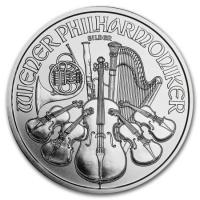
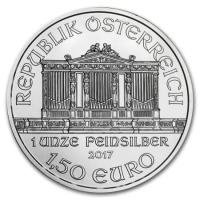
Austrian Silver Philharmonics
The Austrian Mint introduced the 1 oz Silver Philharmonics in 2008. The coins are struck out of 99.9% pure silver and have a face value of 1.50 Euros. Their diameter is identical to the Gold Philharmonic coins but they are a little thicker (3.2 mm). The design of the Austrian Silver Philharmonic coins is also identical to that of the gold coins. The silver coins have a smooth edge though. More than 54 million pieces of this silver bullion coin were sold between 2008 and 2012. The coins are sometimes also referred to as the Vienna Philharmonic silver coins because their name and design was chosen as a tribute to the world-renowned Vienna Philharmonic Orchestra.
The Austrian Silver Philharmonic page gives more information about the coins and allows you to compare current prices.


Austrian Platinum Philharmonics
The Austrian Mint started issuing Platinum Philharmonic coins in 2016. Only 1 oz coins were minted that inaugural year. The coins with a face value of 100 Euros are identical in size (37 mm diameter) to the gold and silver 1 oz coins. Fractional 1/25 oz coins are minted since 2017. Both coin denominations are only available with a brilliant uncirculated finish. The coins out of 99.95% pure platinum are identical in design to the gold and silver versions of the Philharmonic coins. The name and design of the Austrian Platinum Philharmonics was chosen as a tribute to the world-famous Vienna Philharmonic Orchestra. The obverse side of the coins shows an arrangement of classical music instruments and the Great Organ that is located in the Viennese Concert Hall appears on the reverse.
The Austrian Platinum Philharmonic page gives more information about the coins and allows you to compare current prices.

